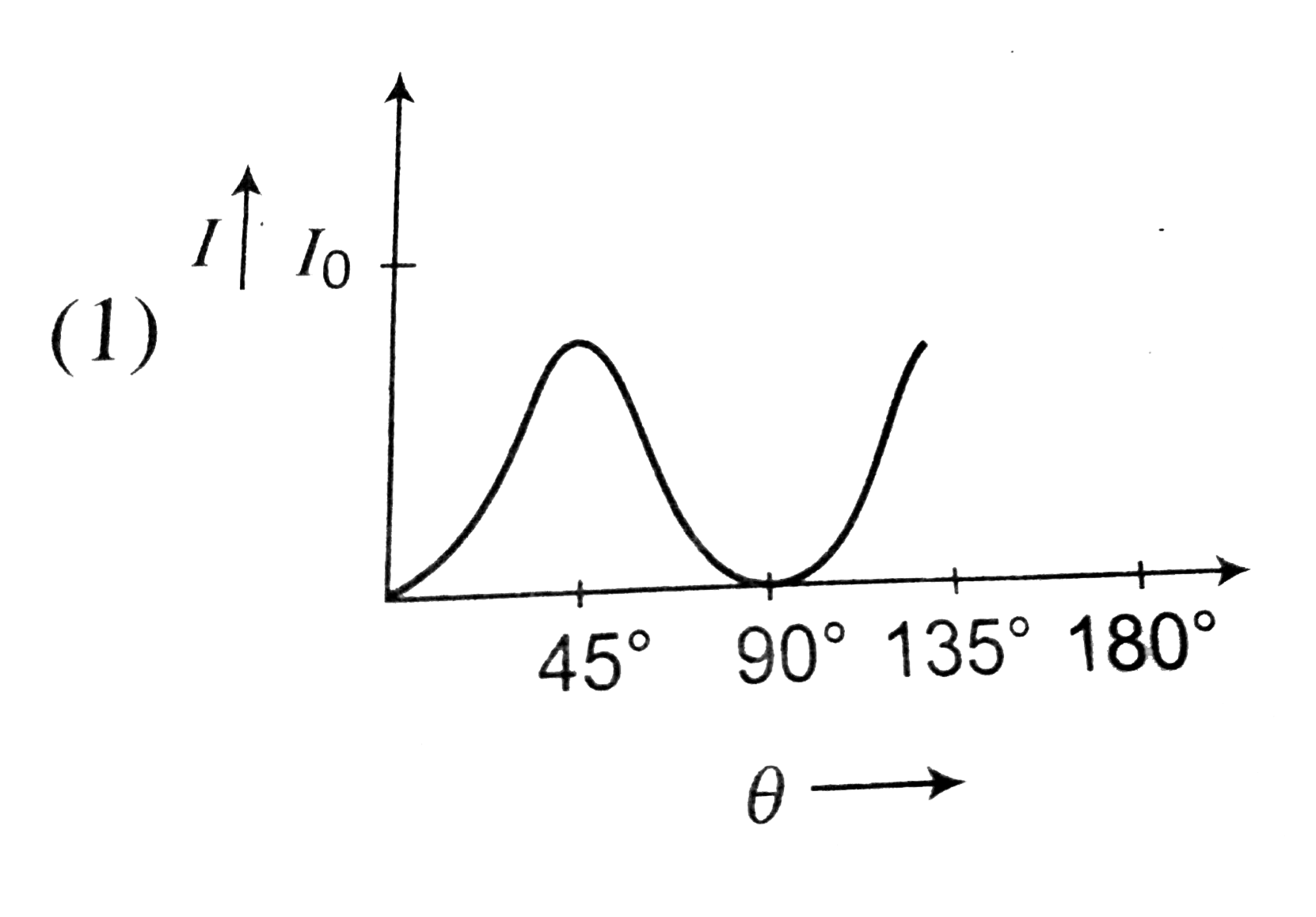What is meant by a linearly polarised light? Which type of waves can be polarised? Briefly explain a method for producing polarised light. Two polaroids are placed at 90∘ to each other and the intensity of transmitted light is zero. What will be the intensity of transmitted light when one more polariod is placed between these two bisecting the angle between them ? Take intensity of unpolarised light as l0
A light wave is said to be linearly polarised if its electric field vector vibrates just in one direction perpendicular to the direction of propagation. Only tranverse waves can be polarised. Light can be polarised by reflecting it from a transparent medium. The extent of polarisation depends on the angle of incident. At a particualr angle of incidence, called Brewster angle, the reflected light is completely polarised as shown below :

Numerical : l=l0cos2θ=l0×(1√2)2=I02
Resultant intensity lR=lcos2θ=l0I02×(1√2)2=I04
Topper's Solved these Questions
Similar Questions
Two polaroids are placed at 90∘ to eachother and the transmitted intensity is zero. What happens when one more polaroid is placed between these two, bisecuting the angle between them. How will the intensity of transmitted light vary on further rotating the third polaroid ?
View SolutionTwo polaroids are placed at 90∘ to each other and the transmitted intensity is zero. What happens when one more polarid is placed between these two bisecting two bisecting the angle between them?
View Solution
Knowledge Check
When a plane polarised light is passed through an analyser and analyser is rotated through 90∘, the intensity of the emerging light
AI0B2I0CI0/4DZeroThe polariser and analyser are inclined to each other at 60∘. The intensity of polarised light emerging from polariser is I. The intensity of the unpolarised light incident on the polariser is
AIB8IC4ID2IThe graph showing the dependence of intensity of transmitted light on the angle between polariser and analyser is
A B
B C
C D
D
Unpolarised light of intensity I is incidnet of the polaroid. What will be the intensity of light transmitted by the polaroid?
View SolutionDefine the term 'linearly polarised light'.
When does the intensity of transmitted light become maximum, when a polaroid sheet is rotated between two crossed polaroids ?
View SolutionDefine the term 'linearly polarised light'.
When does the intensity of transmitted light become maximum, when a polaroid sheet is rotated between two crossed polaroids ?
View SolutionThe polariser and analyser are inclined to each other at 60∘. The intensity of polarised light emerging from polariser is I. The intensity of the unpolarised light incident on the polariser is
View SolutionThe polariser and analyser are inclined to each other at 60∘. If I/2 is the intensity of the polarised light emergent from analyser. Then the intensity of the unpolarised light incident on the polariser is
View Solution
